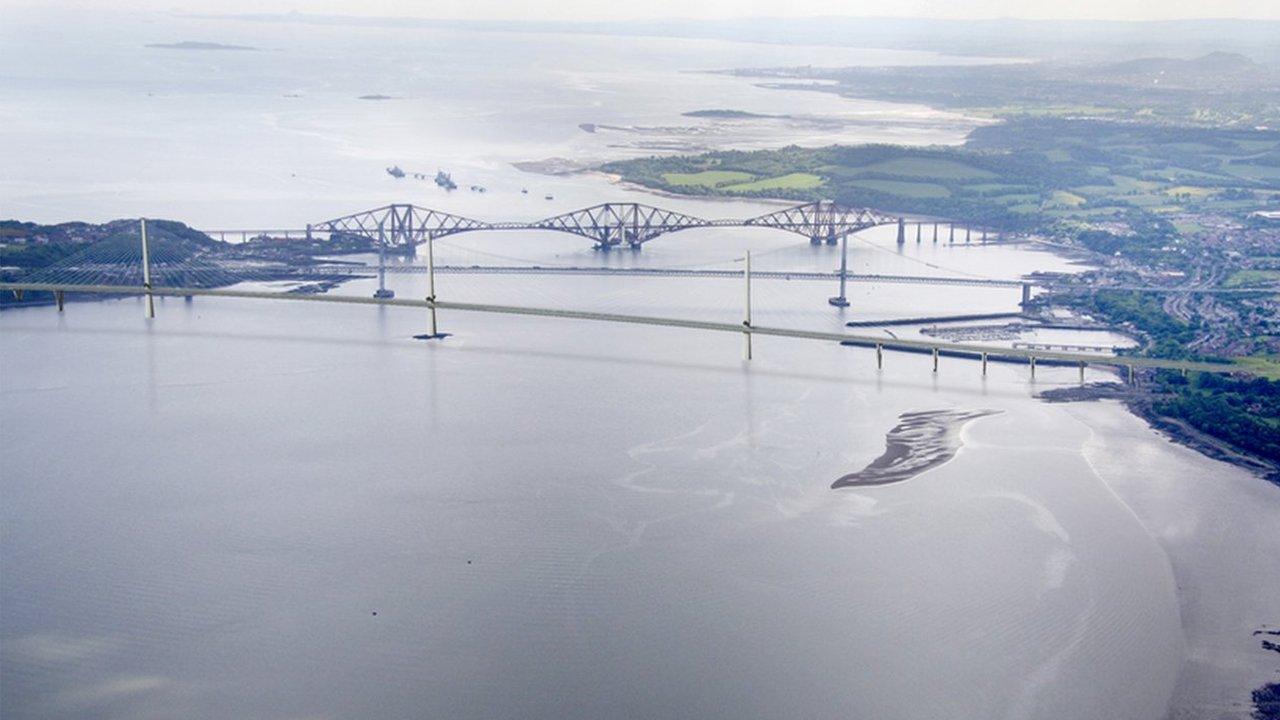The other Forth bridge - 50 years of the remarkable road crossing
- Published
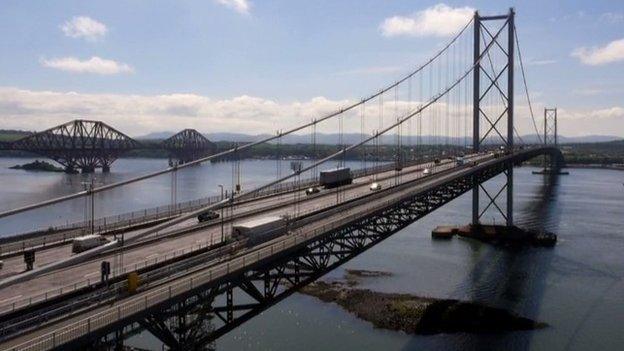
The Forth Road Bridge opened to traffic 50 years ago
It is 50 years since the Forth Road Bridge opened to traffic, easing the crossing between Edinburgh and Fife and transforming the journey from north to south.
When it opened in 1964, it was the fourth biggest suspension bridge in the world and the longest outside the United States.
Five decades on, it carries 24 million vehicles across the Forth every year, but its days as a mass transport route are numbered.
A new crossing will open in two years' time and the Forth Road Bridge's role in the life of Scotland will be greatly reduced.
Those that work on the bridge now and those who helped to build the structure 50 years ago think that role has been undervalued.
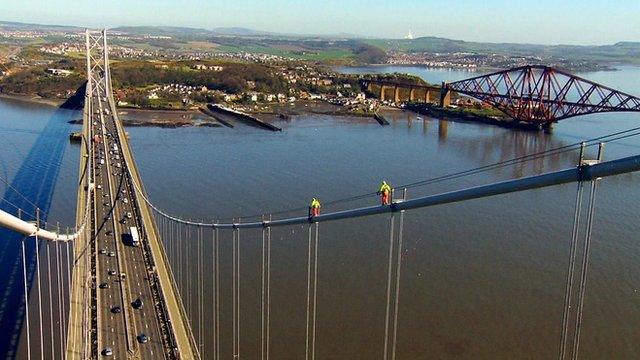
When it was built, it was the longest suspension bridge in Europe
Bridge historian Lillian King told the BBC programme The Bridge: Fifty years across the Forth: "Building the bridge absolutely transformed the country and transformed trade.
"When you think of the volume of traffic that goes across that bridge, and did from the beginning, people must have been just desperate to get this bridge open."
She adds: "They had been trying for at least 200 years to get a bridge or a tunnel to cross the Forth because they were aware that this was a main link between the south of Scotland and the Highlands."
Train travellers had been able to cross the estuary via the Forth Bridge since 1890.
The road bridge that was built alongside it has long lived in the shadow of its iconic neighbour.
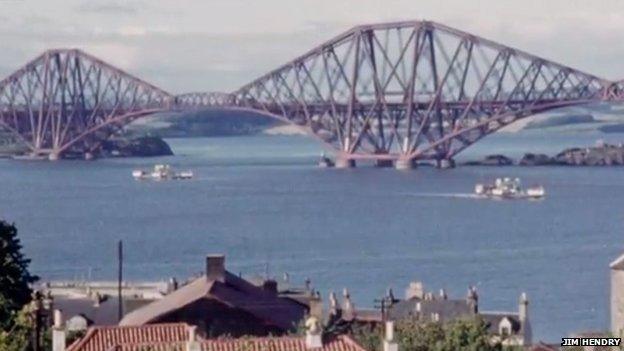
Before the road bridge was built ferries used to carry cars across the Forth
The utilitarian design of the road bridge, the traffic congestion and the maintenance problems that have dogged it in recent years have further downgraded this once great engineering feat.
"There are people who say that the road bridge is just a viewing platform for the rail bridge," says Kate Downie, artist in residence at the Forth Road Bridge.
"But I think of them as a bit like salt and pepper. You can't have one without the other."
Traci Liebisch, who is responsible for inspecting the road bridge on a daily basis, says the bridge is a "grand old lady".
She says: "I personally think she is quite an historic monument and Scotland should be proud of having a bridge like this.
"I think she's done not bad in her 50 years. I'm proud to work on a structure like this, that is known world-wide."
Before the road bridge opened on 4 September 1964, cars could only get across the Forth on a ferry.
Four ferries criss-crossed the river, with services running every 15 minutes at its peak.
Each ferry took about 30 cars, but they could also carry lorries and buses, caravans and passengers.
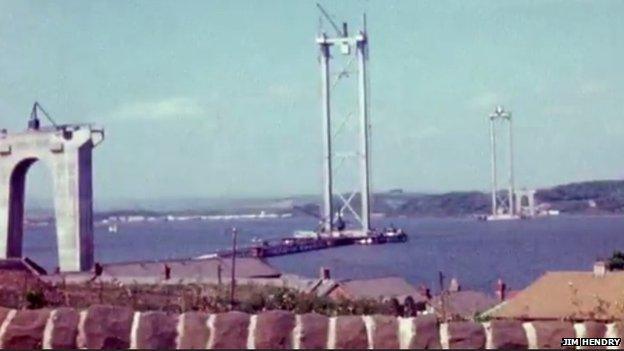
The towers were the first part of the bridge to be constructed
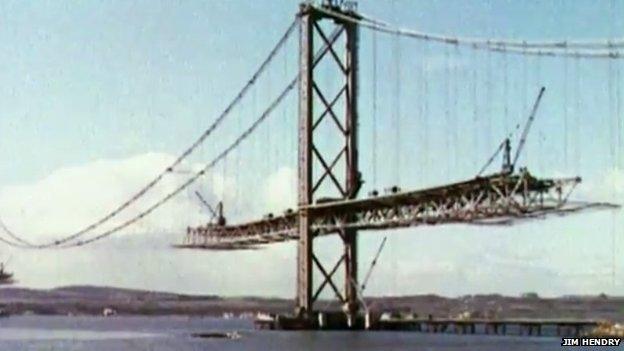
The road decks were built outwards from the main towers
Stephen Reid, who was one of the ferry skippers, says that in the early 1950s the ferry could sit at the pier for 15 minutes and leave empty because nobody had cars.
"Then all of a sudden everybody had cars and we just could not cope," he says.
Construction of the bridge began in 1958.
At the time, the longest suspension bridge in the world was San Francisco's Golden Gate, and the bridge across the Forth was based on its distinctive design.
Barry Colford, who is the current bridge master and chief engineer, says: "All the traffic, all the load of the bridge, is suspended in mid-air. It is very simple.
"It is just like a rope bridge over the Andes, except it is made of steel."
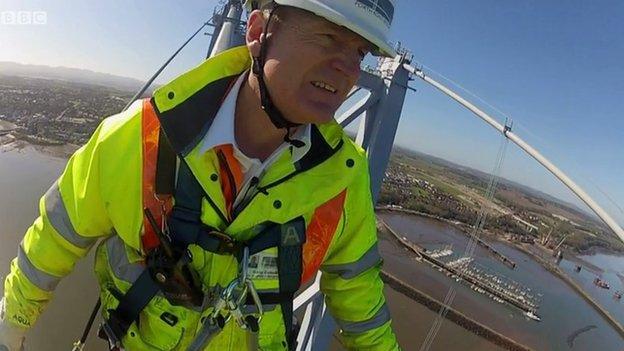
Barry Colford is the chief engineer on the road bridge
The three large suspension bridges that had been built before the Forth had all been in more "benign" climates and there were worries about the stormy Scottish weather.
Historian Lillian King says: "The thing they were afraid of was a repeat of the Tacoma Narrows bridge in America that shook itself to bits in gales not half the strength of the ones that hit the Forth."
Barry Colford says: "The Forth bridge had a stiffening girder because of the lessons learned at Tacoma in 1940."
By the time construction started in September 1958, the estimated cost of the bridge and its approach roads was £16.2m.
No company in the UK was large enough to take on the job alone so a consortium, the ACD bridge company, was formed.
The first job saw divers helping to build the dams that would allow water to be pumped out so the towers could be sunk into the river bed.
Once the newly-assembled steel towers were in place wire-mesh catwalks were installed high above the water to give the bridge workers access.
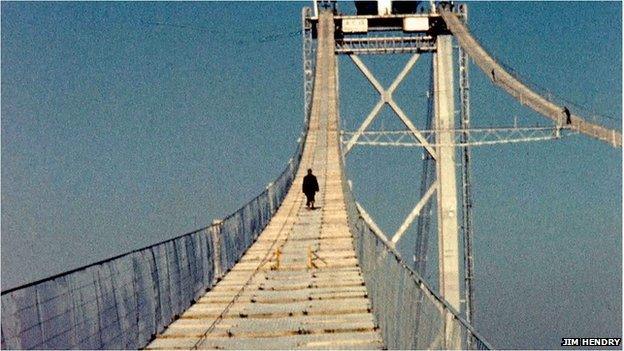
Jimmy Lafferty was officially the first man to walk across the river on foot using the catwalk
Jimmy Lafferty, the steel-erecting foreman, was officially acknowledged as the first man to walk across the river on foot using the catwalk.
But two young engineers had in fact made it across before the walkways were finished.
Hector Woodhouse, an assistant engineer on the bridge, says: "They had not quite finished the mesh but we were not going to stopped."
His pal Alan MacDonald, a section engineer, adds: "We did a tightrope act down the cables so that we could become the first people to cross the bridge."
The pair stepped off together to both claim to be first.
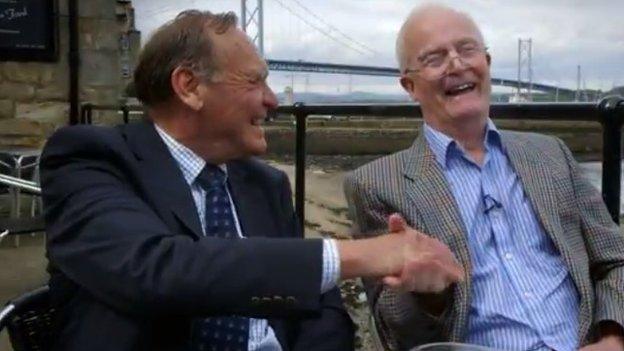
Hector Woodhouse and Alan MacDonald claimed to be the first to have crossed the bridge
The antics of Hector and Alan confirm Lillian King's assertion that health and safety was nothing like as rigorous as it is today.
She says: "Seven men died in the making of the bridge but only four men died on the bridge itself."
On 22 June 1962 the single worst accident of the whole bridge project was when Masterton viaduct, a large section of one of the approach roads, collapsed, trapping four men beneath it. Only one survived.
Once the towers and walkway were in place the next job was to spin the cables that would hold the bridge in place.
The main cable is made up of more than 11,000 high tensile steel wires and the process of "spinning" involved each individual wire being carried across the Forth on a large pulley system.
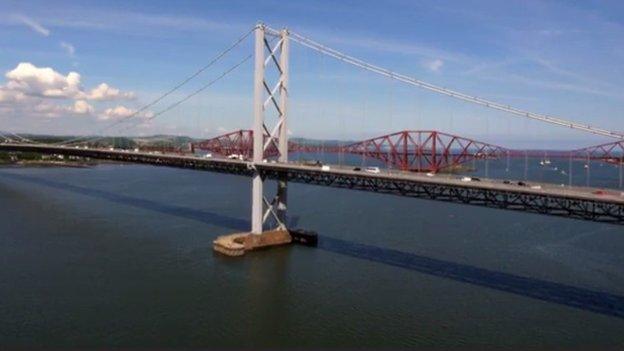
The road bridge has long been in the shadow of its famous neighbour
The work went on 24 hours a day. At either side of the river the wires were encased in concrete anchorages.
The spinning of the cable took nine months, with some 30,000 miles of wire being carried back and forth across the water.
By 1963, the towers and the cables were in place and the "Meccano set" work of erecting the deck could begin. It was built from the towers outwards
Ms King says: "This is a precision piece of work. You see it come out bit by bit. It is like building a tunnel, you wonder if it is going to match up when you get to the middle point."
On the 20 December 1963, the north and south sections of the bridge were joined in the middle, forming the basis of the fourth longest suspended span of steel roadway in the world.
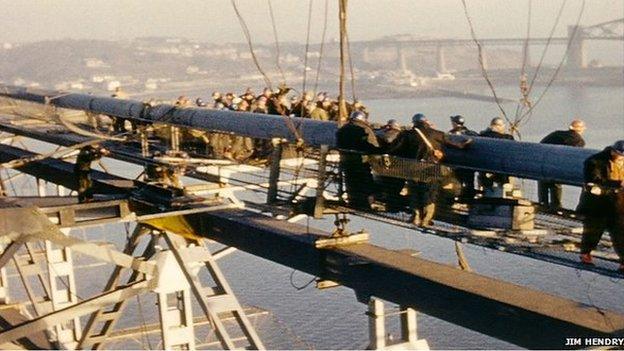
The workers celebrated as the two halves of the structure came together perfectly
Current bridge master Barry Colford says: "The people who built the bridge and the engineers who designed it without computers, with seven-figure log tables, it is quite incredible how well it is built when you look at the tools they had to do it with."
The Forth Road Bridge was finally ready for its grand opening on 4 September 1964, a day so foggy the bridge could not be seen from the riverside.
The Queen officially opened the bridge and as her car drove across at 11am the fog started to lift.
George Barnett was a tea boy and handyman during the bridge's construction.
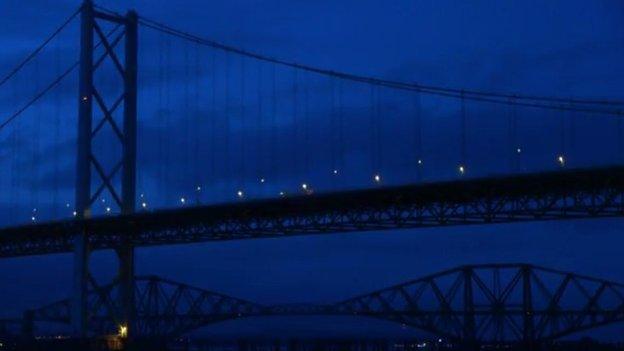
The bridge's days as a main transport route are numbered
He was chosen for the honour of unfurling a flag before the Queen crossed the bridge.
He said: "I was 18 when I hoisted the flag for the Queen. It was a great feeling.
"Three weeks after it we got paid off. That was the bridge finished. We all shook hands and went our different ways."
During the six years it took to construct, amateur film-maker Jim Hendry was given special access to the bridge and the men who were building it.
Fifty years on, the men who built the bridge were invited to watch Mr Hendry's film and were still proud of what they achieved.
Hector Woodhouse says: "Look at it. It is mathematics in action isn't it?"
Assistant engineer Douglas Strachan says: "It was three-and-a-half years of my life and I can drive over it in one-and-a-half minutes, but there is satisfaction. I can see something as an end product to my civil engineering career."
- Published13 August 2014
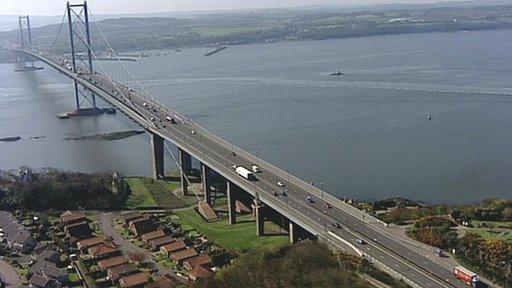
- Published6 August 2014
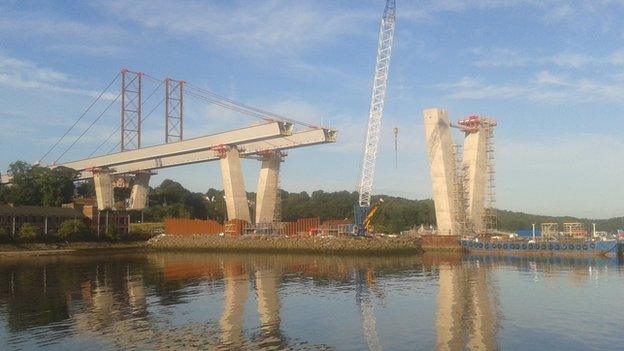
- Published11 September 2013
